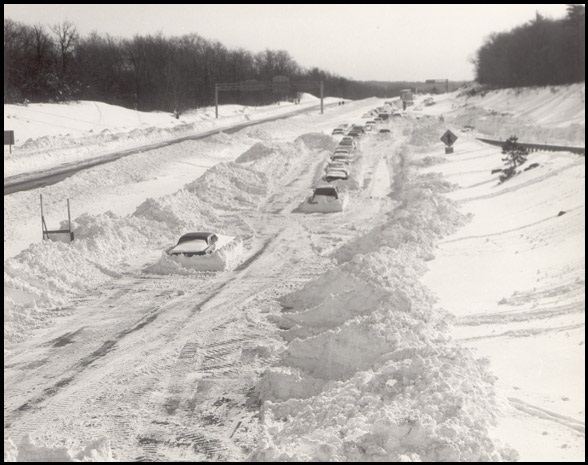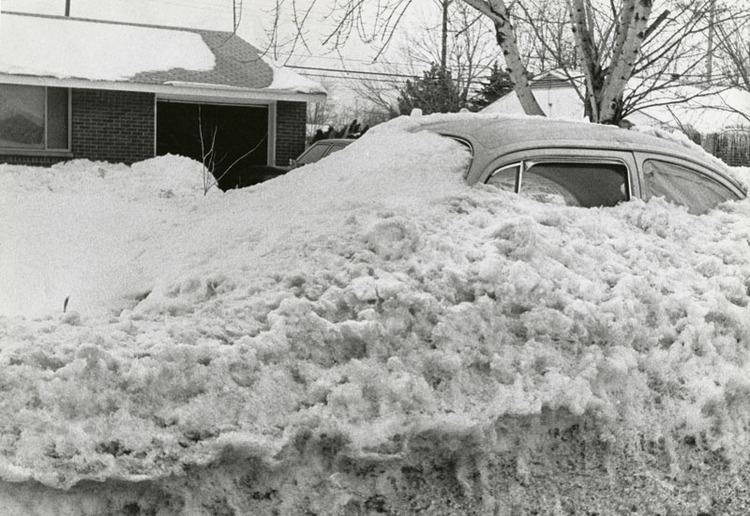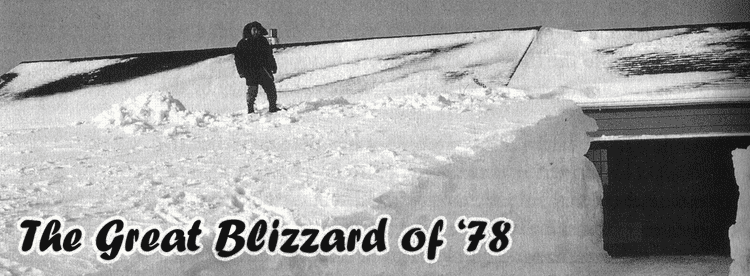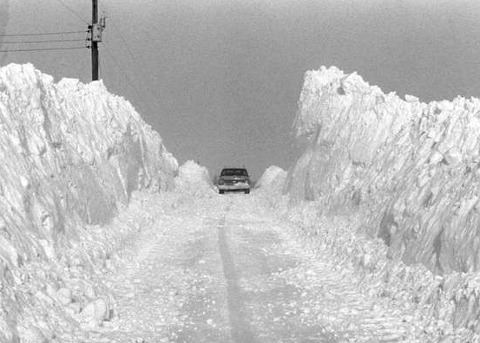Formed January 24, 1978 Lowest pressure 955.5 mb (28.22 inHg) | Dissipated January 29, 1978 Damage Unknown | |
 | ||
Type Extratropical cycloneNor'easterBlizzardWinter storm Similar Northeastern United States bli, Great Blizzard of 1888, 1993 Storm of the Century, Great Storm of 1975, Groundhog Day gale of 1976 | ||
The Great Blizzard of 1978, also known as the White Hurricane, was a historic winter storm that struck the Ohio Valley and Great Lakes regions from Wednesday, January 25 through Friday, January 27, 1978. The 956.0 mb (28.23 inHg) barometric pressure measurement recorded in Mount Clemens, Michigan was the third lowest non-tropical atmospheric pressure recorded in the mainland United States and the lowest in the Central United States. The lowest confirmed pressure for a non-tropical system in the continental United States was set by a January 1913 Atlantic coast storm. The lowest central pressure for the 1978 blizzard was 955.5 mb (28.22 inHg) measured in Sarnia, Ontario, Canada. On rare occasions, extra-tropical cyclones with central pressures below 28 inches of mercury or about 95 kPa (950 mb) have been recorded in Wiscasset, Maine (27.9") and Newfoundland (27.76").
Contents
- This week in history the great blizzard of 1978
- Meteorological synopsis
- Impact
- Quotes
- Snowfall totals
- References

This week in history the great blizzard of 1978
Meteorological synopsis

Late on January 24, surface maps revealed a moisture-laden Gulf Low developing over the Southern United States, while a separate and unrelated low-pressure system was present over the Upper Midwest. In about 24 hours, the merger of the subtropical jet stream (containing a wind max of 130 knots) and polar jet stream (containing a wind max of 110 knots) would lead the low-pressure system to undergo explosive cyclogenesis as it moved rapidly northward during the evening of January 25 (record low pressures were logged across parts of the South and Mid-Atlantic). To be classified as undergoing explosive cyclogenesis, a storm's central pressure must drop at least 24 millibars, or an average of 1 millibar per hour, over a 24-hour period; the Great Blizzard deepened by a remarkable 40 millibars in that span of time.

The storm initially began as rain but quickly changed over to heavy snow during the pre-dawn hours (as arctic air deepened ahead of the storm) leading to frequent whiteouts and zero visibility during the day on Thursday, January 26. As the storm headed for Ohio, this resulted in a "storm of unprecedented magnitude", according to the National Weather Service, which categorized it as a rare severe blizzard, the most severe grade of winter storm. Particularly hard hit were the states of Illinois, Indiana, Kentucky, Michigan, Ohio, and southeast Wisconsin where up to 40 inches (102 cm) of snow fell. Winds gusting up to 100 miles per hour (161 km/h) caused drifts that nearly buried some homes. Wind chill values reached −60 °F (−51 °C) across much of Ohio where 51 of the total 70 storm-related deaths occurred. The third lowest atmospheric pressure ever recorded in the United States, apart from a tropical system, occurred as the storm passed over Mount Clemens, Michigan. The barometer fell to 956.0 mb (28.23 inHg) on January 26. Nearby Detroit, Michigan fell to 28.34 inches of mercury (960 mbar).

The absolute low pressure with this storm was picked up at Sarnia, Ontario at around the same time, where the barometer bottomed out at 955.5 mb (28.22 inHg). Toronto fell to 28.40 inches, breaking the old record by 0.17. Canada did not escape the wrath of the storm as blizzard conditions were common across southwestern Ontario. London was paralyzed by 41 centimetres (16 in) of snow and winds gusting to 128 kilometres per hour (80 mph).
Impact
The blizzard was the worst in Wisconsin history; 51 people died as a result of the storm. Over 5000 members of the Ohio National Guard were called in to make numerous rescues. Police asked citizens who had four-wheel-drive vehicles or snowmobiles to transport doctors to the hospital. From January 26 to 27, the entire Ohio Turnpike was shut down for the first time ever. The total effect on transportation in Ohio was described by Major General James C. Clem of the Ohio National Guard as comparable to a nuclear attack. Michigan Governor William Milliken declared a state of emergency and called out the Michigan National Guard to aid stranded motorists and road crews. The Michigan State Police pronounced Traverse City, Michigan "unofficially closed" and warned area residents to stay home. WTCM radio staffer Marty Spaulding, who closed the bayfront location station the previous night at 11 pm was called to re-open it the next day at 6am as regular staffers could not get there due to impassable roads. Upon arriving after a 45-minute walk in waist deep snow from his home a mere 10 city blocks distant, he had to dig down "a foot" to put the key in the front door.
In Indiana on day two, just a half-hour after the arctic front blasted through, the Indianapolis International Airport was closed due to whiteout conditions. At 3 am, the blizzard produced peak winds of 55 mph. Temperatures dropped to zero that morning. Wind chills remained a bone-chilling 40 to 50 below zero nearly all day. The governor Otis R. (Doc) Bowen declared a snow emergency for the entire state the morning of the 26th. Snow drifts of 10 to 20 feet made travel virtually impossible, stranding an Amtrak train and thousands of vehicles and weary travelers. During the afternoon of the 26th, the Indiana State Police considered all Indiana roads closed.
Classes at The Ohio State University in Columbus, Ohio and the University of Notre Dame in Notre Dame, Indiana were canceled for the first time in the history of those universities; at Purdue University in West Lafayette, Indiana (where 25 inches of snow fell) for the third time in its history; and, at Miami University in Oxford, Ohio for the first time since the assassination of President John F. Kennedy. An inch or more, usually much more, of snow would remain on much of that particular area for nearly two months straight. The storm did much damage to the Ohio valley and to the Great Lakes.
In Brampton, Ontario (northwest of Toronto) on Thursday afternoon, school buses could not get through deep snow to the then-rural campus of Sheridan College to take students home. Neither could any other vehicles, so some community college students had to stay on campus overnight.
Quotes
C. R. Snider, National Weather Service Meteorologist in Ann Arbor, Michigan, said on January 30, 1978:
Snowfall totals
The following table displays selected U.S. snowfall totals during January 25–29, 1978:
Note: * = Total data for a 24 hour period.
